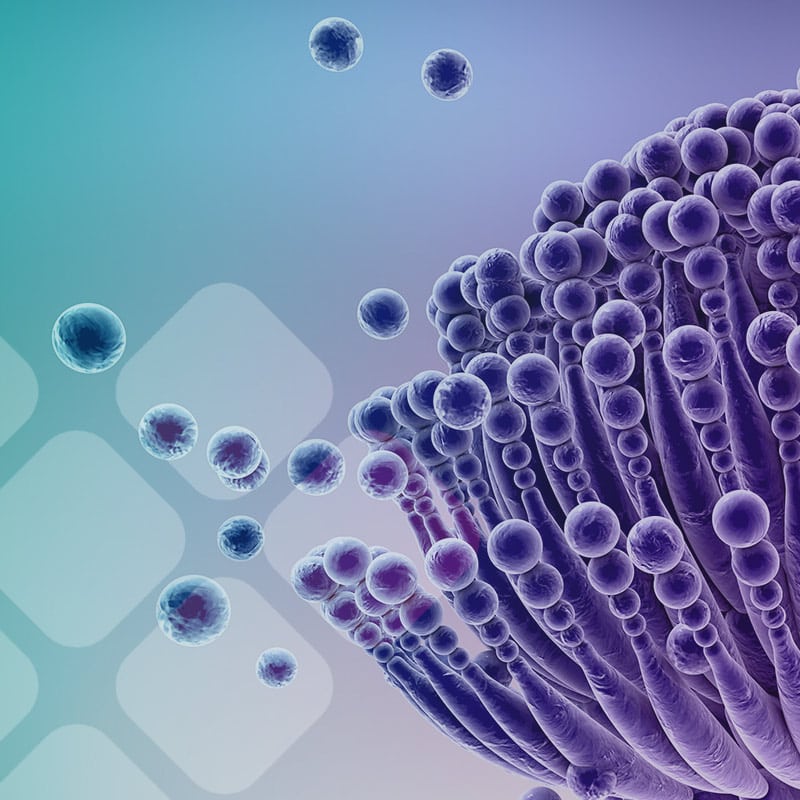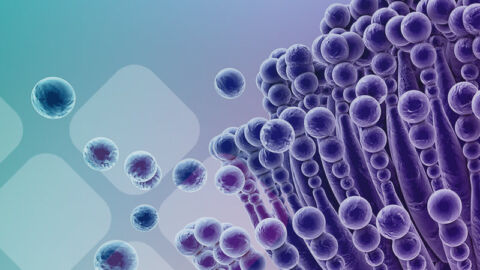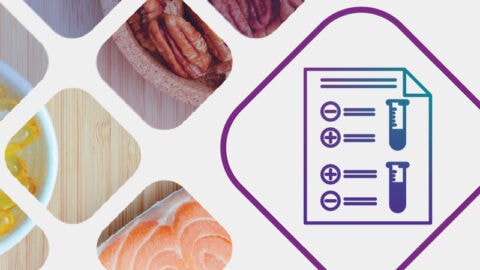On November 12-14, 2021, Mosaic EDGE (formerly GPL Academy) hosted the Environmental Toxin Summit in San Diego, CA as well as streamed online simultaneously. This three-day event focused on the epidemics of toxin exposure, including both toxic chemicals in our environment and mycotoxins from mold. These toxins can cause symptoms of many acute and chronic health disorders. Those who attended the summit learned how to use effective diagnostic and treatment protocols for their patients with toxin exposure and get them on the road to recovery.
The following Q+A is a grouping of responses from a distinguished pool of speakers who participated in the Environmental Toxin Summit with their own unique topics and lectures as labeled.
The material contained within this article is not intended to replace the services and/or medical advice of a licensed healthcare practitioner, nor is it meant to encourage diagnosis and treatment of disease. It is for educational purposes only. Any application of suggestions set forth in the following portions of this article is at the reader’s discretion and sole risk. Implementation or experimentation with any supplements, herbs, dietary changes, medications, and/or lifestyle changes, etc., is done so at your sole risk and responsibility.
The Approach of a Mosaic Diagnostics Clinical Consultant
Q: Please comment about Chaetoglobosin A and appropriate treatment protocols?
A: Treatment for this toxin is like others. You would need to remove the source and detox the toxins. Binders like charcoal bind all mycotoxins at some level and can be effective for this toxin too. Consider a combo binder product.
Q: If zearalenone is very elevated (90) but the patient has low estrogen, would you believe the results?
A: Yes. Zearalenone does not necessarily increase your own estrogen but has its own estrogenic effects. Also, the LC/MS is specific to the toxins so if it’s populating there is an exposure. Also realize all toxins do not cause the same symptoms in every person.
What would be a good next step if you have a sensitive patient with mold who reacts poorly to binders such as GI Detox? Is there a binder that works better for sensitive individuals or something that needs to be done first?
A: You can use another product that doesn’t contain strong binders like charcoal and clay. Consider ToxinPul™ Multi-Function Detox by New Beginnings Nutritional’s.
Lyme, Mold and Mycotoxins: Strategies for Navigating Complex Illness
Q: What’s the dosing of TRISALTS for Herx?
A: Take 1 tsp every 2-3 hours until feeling better. May cause loose stools at higher doses, so warn patients.
Q: If you are exposed to mycotoxins at the office, do you carry a risk of bringing the toxin home through your clothes and belongings?
A: It is possible that porous material can contaminate other objects, so if the exposure at work were high enough and gets in your clothes when you sit on a chair, or bed it is possible to contaminate those surfaces. However, this is not likely the way most people get exposure, and it seems this contributes to a minimal form of exposure.
Q: For treatment of molds/mycotoxins, do you treat with antifungal medication (Diflucan, Nystatin) concurrent with binders?
A: If you are treating actual mold colonization, you need itraconazole as other azoles are not effective at killing mold. They are good for yeast, but not for mold. Yes, I use concurrent with binders as they are doing different things in the body.
Q: If you use binder products from CellCore Biosciences, does that mean you do not need to use Cholestyramin or Welchol?
A: Generally speaking, yes. You do not necessarily need to have multiple binders on board. Just monitor your patient’s progress and make sure their mycotoxin levels are dropping.
Q: One of my patients decided to try this ionic foot bath instead of the IonCleanse: Regain Health & Vitality ionic foot cleanse. Are you familiar with this version and do you think it will work? She purchased it since it costs less than $200.
A: I can’t speak to other ion foot baths but know that IonCleanse has a patent on their device, so it is unlike other ion generators out there. My personal experience with IonCleanse from AMD is that most people have a good response to it. I have had other patients get different devices and they do not seem to work as well, so I’m betting you get what you pay for.
Q: Could celiac symptoms be from contamination of the wheat with mold/toxins? Instead of allergy?
A: Not likely as Celiac disease is a genetic disorder in breaking gliadin down. No doubt, mycotoxin and mold contamination can aggravate both Celiac and non-celiac gluten enteropathy.
Environmental Illness and Treatment Protocols
Q: B/W salicylate, oxalate and histamine/MCAS issues, what to test for/address first?
A: I view all 3 of these matters as “back 9”, or secondary, root cause problems. Commonly, there are deeper, primary root cause problems causing each of these, so I’d look for those root causes. Reflective of the very essence of my presentation, one is not likely to find a singular cause – I believe it would be very, very rare for a practitioner to cast a wide enough net and yield only one cause for any or all of these problems. But at this point in time, if I was forced to name one most likely cause, or name the one cause that is likely to be having the greatest contribution to these issues (among the many found), I’d suspect it to be mycotoxins. That’s likely to be the case with histamine/MCAS, certainly, with high oxalates a close second (commonly because where there are mycotoxins, yeast is likely to be a problem as well, and oxalates are common with the latter). With high salicylate levels, if we’re talking about the marker under the “toxin” biomarkers within the GPL OAT results, my suspicion would more likely lie within a gut dysbiosis root cause, but even that is commonly going to be associated with mycotoxin illness. Whereas, any other exposome/”non-self” condition (incl. tickborne illnesses, heavy metals, viruses, etc) or other “self” condition (incl. immune deficiencies, hormone imbalances, methylation dysfunctions, etc) is not nearly as likely to (singularly) cause these problems…. A decent second suspicion would be to look at gut health, which is arguably unfair in comparison since it is a more categorical answer than mycotoxins being a more focal/singular response – gut health could include bacterial dysbiosis that is driving salicylate marker abnormalities; genetic-based deficiencies in histamine metabolism (leading to excess histamine in the gut); and/or fungal dysbiosis leading to high oxalates.
Q: What are the best way to lower oxalate levels?
A: Look for root causes. Dr. Woeller/GPL staff often teach that 3 of the most common causes are yeast, oxalate rich foods, and B6 deficiency. In my experience, yeast, as reflected by high arabinose levels (marker 7 on the OAT), is a common problem, even in a more generalized health population (vs. the chronic, complex illness patients). Given such, and my clinical impression that not many patients, as a generalized population, are likely to be eating a large enough amount of oxalate foods, yeast is likely to be the most common culprit among these three. (B6 deficiency, on some level, may be pretty common, but my suspicion is that this isn’t likely to be a strong enough deficiency in most people to cause high oxalates – again, across the generalized population).
Oxalates and Mold: A Hidden Sources of Inflammation
Q: What about stone dissolving herbal therapy?
A: There are several herbal preparations that may be beneficial for high oxalate individuals. This paper, Dietary Plants for the Prevention and Management of Kidney Stones: Preclinical and Clinical Evidence and Molecular Mechanisms, summarizes their potential benefits and specific mechanisms.
Q: Do you see a pattern of lactose intolerance in genetic testing with patients with high oxalates?
A: Not necessarily, though lactose intolerance can be an exacerbating factor. Far more people will be lactose intolerant than will have a problem with oxalates.
Q: Do you have a protocol for oxalate that you can share with us?
A: The first step would be to assess which mechanisms for over-absorbed oxalates are coming into play. Next, we would add Epsom salt soaks, working progressively up to 20 min 3-5x/week as tolerated. Evaluate the diet for volume of oxalates and start reducing/binding oxalates at roughly 10% per week. The next steps depend on the individual presentation and may be bile support, probiotics, antimicrobials, B1, and/or B6. The individual presentation will typically dictate the order and necessity of those pieces.
Q: Can you repeat the brand name of the sulfate/sulfite test strips you’re using?
A: Quantofix
Q: Where do you get the sulfate test strips?
A: Amazon
Q: What would be considered “high” for a child when using the sulfate strips?
A: 10
Q: Can you expand on the use of sulfate test strips if/when oxalate markers aren’t elevated on an Organic Acids Test? Would we expect to see low to no reported sulfate on the strip because of wasting?
A: Typically, in this scenario you will see high sulfate as the oxalate is being retained and the sulfate is being excreted.
Q: If oxalate crystals are insoluble in tissue, how can they dissolve to show up in the urine?
A: They are present in urine, not dissolved in it.
Q: Can urine be a false low?
A: Absolutely! Therefore we need to look for other clinical indications such as sulfate wasting.
Q: Can you repeat the gene that you mentioned that helps with sulfation?
A: SUOX
Q: And you suggested giving molybdenum?
A: Yes, it is the cofactor and can help when there are polymorphisms or when the transulfuration pathway is upregulated and sulfites are high.
Q: If you have high oxalates and positive for mycotoxins (i.e ochratoxin and gliotoxin) – which anti-fungal medication would you recommend starting + dosage and duration?
A: I would use an antifungal if there was evidence of colonization but am not a doctor and cannot prescribe. This also needs to be personalized for the individual. I do like Biocidin for these cases.
Q: How much baking soda are you recommending in water in between meals as prevention for oxalate dumping?
A: Very little; typically, ⅛ tsp
Q: How much Epsom salt do you typically recommend adding to a bath to help mobilize oxalates?
A: ¼c in a foot basin or 2 cups in a bath. There are sensitive individuals who do need to start more slowly.
Q: What is your favorite recommendation for dealing with fat malabsorption/digestion?
A: TUDCA and/or the combination of Quicksilver BittersX and Pure PC. Adding castor oil packs over the liver and gallbladder and using coffee enemas can be helpful if there is “sludgy” bile.
Q: Can oxalates pull calcium from bone and cause osteoporosis?
A: There are several studies exploring the associations between kidney stones and osteoporosis, but a causal link, to my knowledge, has not been clearly established. Please refer to Kidney Stones and Risk of Osteoporotic Fracture in Chronic Kidney Disease as well as Unravelling the links between calcium excretion, salt intake, hypertension, kidney stones and bone metabolism.




